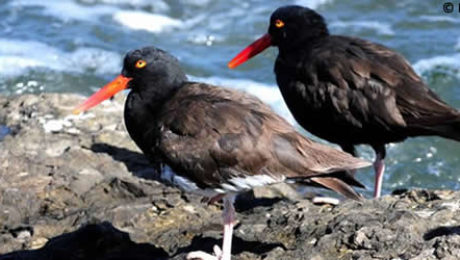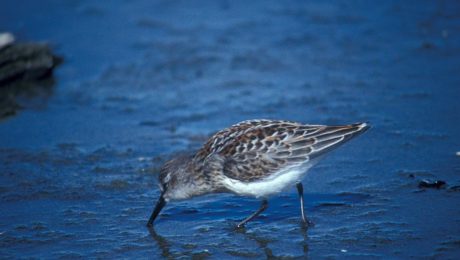American Oystercatchers on the Sinaloa Coast
The coast of Sinaloa provides critical habitat for the American Oystercatcher. Conservation efforts will require a shared vision and coordinated work between CONANP, community groups, and academics to plan and carry out monitoring and management actions.
- Published in News
Coordinated Waterbird Monitoring in Coastal Wetlands of Northwest Mexico
Project Description We will develop and implement a standardized monitoring protocol through a network of regional partners and in coordination with partners in the United States. Our goal is to measure population trends and spatial distribution of waterbirds in relation to changes in habitat, disturbance, climate change, and other limiting factors. Learn More Eduardo Palacios
- Published in Awards Program
Conserving American Oystercatcher in northwest Mexico
The American Oystercatcher is a large and charismatic shorebird that lives on sandy beaches, islands, and coastal wetlands of the temperate and subtropical zones of the Western Hemisphere.
- Published in News
Snowy Plovers…from Sinaloa to Utah!
After the Partners in Flight V International Conference SJV staff and partners toured the Great Salt Lake, where the Audubon-managed South Shore Preserve and Lee Creek Area is located.
- Published in News
Coordinated shorebird monitoring at 11 WHSRN sites in northwest Mexico
A momentous workshop was held in October 2011 in Mazatlán, Sinaloa, to develop the first-ever standardized shorebird-monitoring protocol for Mexico.
- Published in News
Intensive bird and habitat monitoring in the Santuario Tortuguero Playa Ceuta Natural Protected Area and Sistema Lagunar Ceuta Ramsar Site
Project Description The Ceuta Lagoon System, located in Sinaloa, is a site of international significance in terms of biodiversity. It is listed as a Ramsar site, is part of the Western Hemisphere Shorebirds Reserve Network, and has a national decree as a Natural Protected Area, managed by CONANP (Comisión Nacional de Areas Naturales Protegidas). This
- Published in Awards Program
Workshop to form hypotheses and develop protocols for examining probable causes of population declines in shorebirds
Project Description We propose to conduct a workshop to establish a methodological framework for testing hypotheses that could explain the decrease in population size of shorebirds in the Western Hemisphere. The shorebird monitoring program in the Northwestern Mexico is coordinated by Terra Peninsular and supported by CRIMBI (USFS) began in 2011 and will continue through
- Published in Awards Program
Restoration of an important breeding site for threatened shorebirds in a coastal wetland of Sinaloa
Project Description Bahía de Ceuta is an important coastal wetland in northwestern Mexico. Located in the southeastern part of the bay is an abandoned salt mine (~150 ha), which is used as a breeding site for at least five species of shorebirds, including Snowy Plover (100 pairs) and Least Tern (300 pairs), both of which
- Published in Awards Program
Stopover ecology and habitat requirements for molt-migrants in Sonora and northern Sinaloa, Mexico
Project Description Many species of birds, including species of conservation concern, migrate to the “Mexican Monsoon Region” to undergo molt; however, virtually nothing is known about these birds during the molting period. In order to investigate the ecology of these molt-migrants and identify critical habitat requirements for molting, IBP undertook a one-year pilot study, the
- Published in Awards Program
Distribution, Abundance, and Reproductive Status of the Mexican Duck on the Sonoran and Sinaloan Coasts
Project Description The increase in agricultural development in Sinaloa and Sonora in recent decades has caused important changes in habitats where the primary vegetation was originally lowland forest. The hydro-agricultural infrastructure, such as wells, dikes, and drains has supported the emergence of new niches that bird species are taking advantage of in both states. Despite
- Published in Awards Program
- 1
- 2


 English
English  Español
Español 



